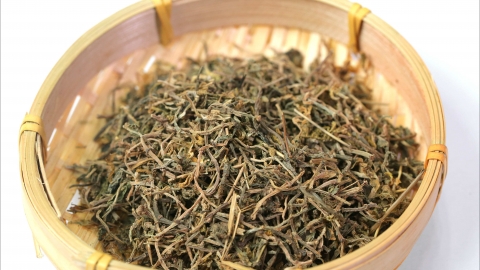What does Sedum sarmentosum (垂盆草) combine with to treat pharyngitis?
Herbs commonly used with Sedum sarmentosum (垂盆草) to treat pharyngitis include Lonicera japonica (金银花), Scaphium album (胖大海), Platycodon grandiflorum (桔梗), Glycyrrhiza uralensis (甘草), Mentha haplocalyx (薄荷), etc. If any abnormalities occur, timely medical consultation is recommended. Detailed explanations are as follows:

1. Lonicera japonica: Lonicera japonica has the effects of clearing heat, detoxifying, dispersing wind-heat. When combined with Sedum sarmentosum, it enhances the action of clearing heat from the upper jiao. It is suitable for symptoms such as redness, swelling, pain, and fever in the throat caused by wind-heat invasion or excessive heat in the lungs and stomach due to pharyngitis. Decoction of these two herbs used as a tea can reduce inflammatory responses in the throat and alleviate discomfort.
2. Scaphium album: Scaphium album clears heat, moistens the lungs, benefits the throat, and improves voice. When used with Sedum sarmentosum, it can target symptoms such as hoarseness, dryness, itching, and foreign body sensation in the throat caused by pharyngitis. Sedum sarmentosum clears damp-heat, while Scaphium album moistens the throat. Together, they provide adjunctive regulation for the yin deficiency and internal heat type of chronic pharyngitis and are commonly consumed by steeping in boiling water.
3. Platycodon grandiflorum: Platycodon grandiflorum promotes lung function, benefits the throat, removes phlegm, and drains pus. When combined with Sedum sarmentosum, it can improve symptoms such as cough, phlegm, and sore throat caused by pharyngitis. Sedum sarmentosum clears heat toxins, while Platycodon grandiflorum regulates lung qi. Decoction of both herbs can help expel phlegm from the throat, reduce the feeling of blockage, and restore throat patency.
4. Glycyrrhiza uralensis: Glycyrrhiza uralensis strengthens the spleen, boosts energy, clears heat, detoxifies, and harmonizes other herbs. When combined with Sedum sarmentosum, it can moderate the cold nature of Sedum sarmentosum and enhance its effects of moistening the lungs and benefiting the throat. It is suitable for mild throat pain and dryness during the recovery phase of pharyngitis. Decoction or tea made from both herbs can harmonize the medicinal properties, alleviate throat discomfort, and promote mucosal healing.
5. Mentha haplocalyx: Mentha haplocalyx disperses wind-heat, clears the head and eyes, benefits the throat, and promotes eruption of skin rashes. When combined with Sedum sarmentosum, it enhances throat-clearing effects and relieves pain. It is suitable for symptoms such as redness, swelling, pain, nasal congestion, and runny nose at the early stage of pharyngitis caused by external wind-heat attack. Decoction of both herbs used as a tea can create a cool and comfortable feeling in the throat and reduce inflammatory responses.
When using Sedum sarmentosum in combination for treating pharyngitis, it is necessary to first consult a TCM practitioner for syndrome differentiation, and adjust the herbs and dosages according to individual conditions. Self-administration without medical guidance is not recommended. If symptoms of pharyngitis persist or worsen, prompt medical attention should be sought to avoid treatment delay.






